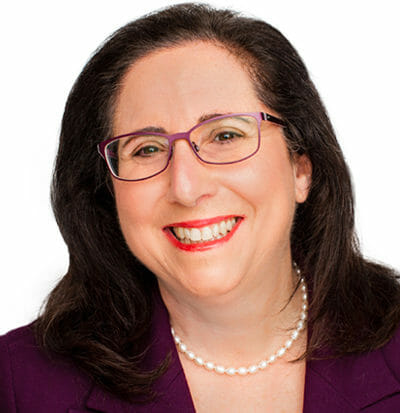Victoria’s Secret Stores Brand Management Inc. V. Hui-Chuan Chiang, Beijing High Court (November 13, 2017)
While the Chinese government has been updating its intellectual property laws to target bad-faith trademark filings, in a recent matter before the Beijing High Court, Victoria’s Secret was unable to meet the threshold to demonstrate that an identical third-party mark was filed in bad faith given that the applicant’s ten VICTORIA’S SECRET applications were not voluminous enough to be considered “mass filings.”
1. Background
A Taiwanese individual Hui-Chuan Chiang (“Chiang”), founder of a tea house chain which focuses on traditional English high tea culture, filed an application on July 6, 2009 for 维多利亚的秘密 VICTORIA’S SECRET covering, inter alia, “industrial design; styling [industrial design]; packaging design; design of interior décor; conversion of data or documents from physical to electronic media; computer software consultancy; authenticating works of art; etc” in Class 42 (the “subject application”). The applied-for mark was for 维多利亚的秘密VICTORIA’S SECRET (the Chinese characters corresponded to the Chinese transliteration for “VICTORIA’S SECRET.” In addition to the subject application, Chiang also owns applications or registrations for 维多利亚的秘密 VICTORIA’S SECRET in Classes 5, 8, 16, 21, 30, 32, 33, 38 and 43.
Victoria’s Secret Stores Brand Management Inc. (“Victoria’s Secret”) opposed the subject application on December 21, 2010 on the basis that its trademark “VICTORIA’S SECRET” had attained well-known status for lingerie products, the subject application was likely to mislead consumers, and the subject application was filed in bad faith. In its opposition decision issued on May 2, 2012, the China Trademark Office (the “CTMO”) rejected Victoria’s Secret’s arguments and approved the subject application for registration. On appeal, the Trademark Review and Adjudication Board (“TRAB”) upheld the CTMO’s decision and held that while the VICTORIA’S SECRET trademark has a reputation in China with respect to lingerie, Victoria’s Secret did not prove that the trademarks VICTORIA’S SECRET and the corresponding Chinese transliteration “维多利亚的秘密” also possessed a reputation for the industrial design-related services in Class 42 of the subject application. The TRAB further held that there was insufficient evidence to prove that the subject application was filed in bad faith.
Victoria’s Secret appealed the TRAB’s decision to the Beijing No 1 Intermediate Court (the “Intermediate Court”) which ruled in favor of Victoria’s Secret based on Article 41.1 of the 2001 PRC Trademark Law which prohibits bad-faith filings made by fraudulent or other improper means. The Intermediate Court held that the fact that Chiang filed multiple applications for 维多利亚的秘密 VICTORIA’S SECRET (a total of ten altogether) indicated that the applications were filed in bad faith.
Chiang appealed the decision of the Intermediate Court to the Beijing High Court on the grounds that the Intermediate Court failed to consider the evidence submitted by Chiang to justify her filing of the subject application. Chiang’s evidence included: (i) a program by China Central Television Station; (ii) online reports about Chiang and her tea houses; (iii) search results on Baidu.com; and (iv) online media reports on the origin of English afternoon tea.
2. Beijing High Court’s Decision
The Beijing High Court overturned the Intermediate Court’s decision on the grounds that the evidence submitted by Victoria’s Secret was insufficient to prove that the subject application was filed in bad faith or that the VICTORIA’S SECRET mark was well-known before the filing date of the subject application. The High Court reasoned that Chiang only had a few applications for 维多利亚的秘密 VICTORIA’S SECRET and there was a possibility that Chiang would in fact use the marks. Further, while Chiang also had 380 other applications and registrations on the Chinese register for other marks, such applications mainly covered tea house services, tea products, fine-bone china products and related goods, under Classes 3, 8, 16, 21, 30, 32, 35 and 43, and therefore did not support an argument of bad faith. On balance, the Beijing High Court concluded that filing ten applications for the same mark in different classes did not constitute “mass filings” of trademark applications.
In its decision, the Beijing High Court took the opportunity to clarify what would constitute prohibited “mass filings” filed in bad faith. Such factors include (i) mass filing for prior trademarks of others with a certain reputation with the purpose of assigning the marks for profit; and (ii) a large number of filings with no genuine intention to use the mark or registering many different prior marks of different entities with a certain reputation.
While it is encouraging that the Beijing High Court proffered guidance on bad-faith filings, it is unfortunate that it did not further clarify how many applications would constitute “mass filings.” Here, the decision seemed to turn on the fact that the applicant was able to show a justifiable intention to use the subject mark (although it is questionable whether she would use the mark on all the applied-for goods and services). It is unclear, however, whether ten applications for the same mark could be considered “bad-faith mass filings” where the applicant is unable to demonstrate an intent to use.


















































